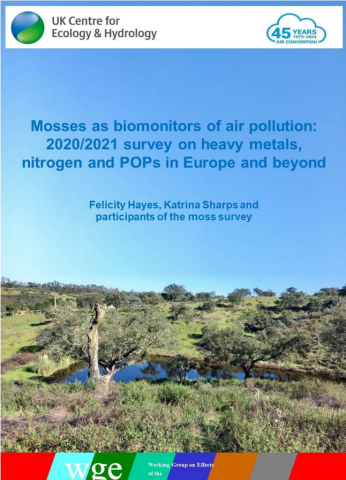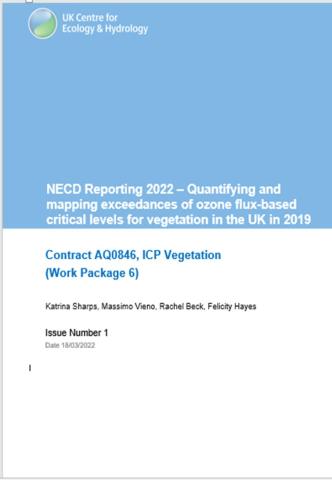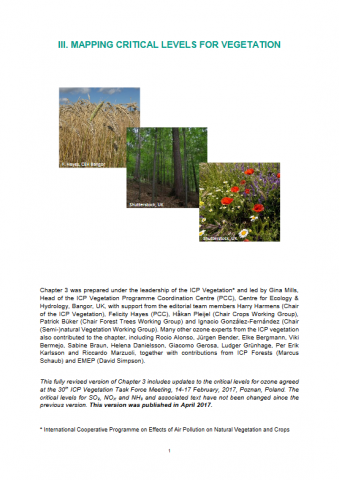
Loads and levels (and a little bit of leisure) in Lithuania
19th – 21st February 2024
Mike Perring (ICP Vegetation Programme Co-ordination Centre)
I am writing this on the train to Vilnius Airport (and now the plane to Manchester) having just left the latest Task Force Meeting for ICP Vegetation. For the first time since Riga in February 2020, we have been able to hold the meeting in person, in the surroundings of the former capital city of Lithuania: Kaunas. On a personal level, it was fantastic for me to be able to meet and exchange ideas with colleagues from across Europe – and beyond – having only seen a few of their faces on screens since joining UKCEH. So, thank you to all those who participated and made for an interesting and enjoyable meeting.
A big “Thank you” is also extended to our local organisers, led by Valda Gudynaitė-Franckevičienė from the Lithuanian Research Centre for Agriculture and Foresty (LAMMC), for being such welcoming and excellent hosts. Not only did they arrange a fantastic venue at the Victoria Hotel but they also organised a fabulous conference dinner and walking tour(s) – more of which later! Unfortunately, but for good reasons, Valda Araminienė, a long-time supporter of ICP Vegetation, was unable to host the meeting which she had originally planned for Kaunas in 2021. So, the thank you needs to be even bigger given how the local organising team stepped up, “filled her shoes”, and enabled the event to run seamlessly.
As ever, the Task Force meeting provided an opportunity to share the latest knowledge on effects of air pollutants on vegetation. There were two main foci:
- using moss as biomonitors (particularly relating to loads of microplastics, nitrogen (N), heavy metals and persistent organic pollutants); and,
- the impacts of ozone on biodiversity, especially crops and semi-natural vegetation (and the critical levels at which damage occurs), and with extensions to N.
There was also time for some leisure (and levity!), with much catching-up among old friends and new faces whether at breakfast, in the coffee breaks, at the conference reception on the first evening (complete with images of Lithuania in warmer seasons…), at the conference dinner, or the excellent walking tour(s) on the last evening.
Prior to in-depth talks in parallel sessions on the two main foci, a plenary session opened the meeting. Delegates were officially welcomed by the Director of LAMMC (Gintaras Brazauskas), and the Deputy Director for the Institute of Forestry activities (Marius Aleinikovas). Felicity Hayes, Chair of ICP Vegetation, then provided an overview of our work, updating attendees on progress since the last meeting. This included updates to the Scientific Background Document and Mapping Manual taking account of soil moisture impacts on ozone uptake and risk assessment, and ammonia critical levels, as well as publications with the World Meteorological Organisation on particulate matter pollution (https://library.wmo.int/idurl/4/68653) and tropospheric ozone pollution (https://library.wmo.int/idurl/4/68654).
After a break for coffee and an opportunity to see posters covering information on ozone and moss, all delegates heard about policy developments providing the context for ICP Vegetation (Felicity Hayes) (including e-learning courses if you are interested: https://unece.org/environment-policy/air/e-learning), the work of Valda Gudynaitė-Franckevičienė on poplar hybrids and their response to spectral composition – that can be modified by air pollutants – and some preliminary results from a Europe-wide study on microplastic deposition to mosses (Mehriban Jafarova).
The snippet of ‘remote’ and ‘anthropogenic’ differences in microplastic deposition that Mehriban showed whets the appetite for finding out the results in due course from the wider microplastics study – MADAME (Microplastic Atmospheric Deposition Assessment using Moss in Europe). With its comparison of moss samples from > 30 countries across 3 labs (at UKCEH Wallingford, in Germany at IUTA, Duisburg, and in Canada at Trent University), it promises some exciting findings on refining microplastic analysis methods, which remain in their infancy and virtually untested in relation to biomonitoring. Furthermore, results will detail a snapshot of spatial variation across the European continent. Crucially, it will provide some much-needed foundational information on the types of microplastics that are being deposited across Europe, whether these vary in different regions, and to allow informed investigations on the as-yet unknown ecological and health effects.
The morning plenary session finished with Katrina Sharps’ recorded talk on how effective the Gothenburg Protocol has been in relation to alleviating crop production losses. This analysis showed some interesting results on expected crop losses from air pollution even with substantial societal change – for instance, from diet alteration and resulting emissions reductions. The stand-out result was that even with diet change, European countries would still expect 17 million tonnes of lost wheat production in 2050 from poor air quality.
Biomonitoring with mosses – assessing pollutant loads
In the afternoon and throughout most of the following day, the parallel sessions took place. In the moss sessions, there were a selection of talks that further investigated biomonitoring whether of polycyclic aromatic hydrocarbons (Paweł Świsłowski), the accumulation of trace, rare earth and heavy metal elements (Omari Chaligava, Marta Segura Roux and Jana Borovská respectively), metabolomic monitoring (Sébastien Leblond), or as an application to protect cultural heritage (Lisa Grifoni). Stefano Loppi provided an overview of what can be learnt from moss monitoring in Tuscany, complemented by a microplastic-focused talk from Mehriban for the same region. Guntis Tabors provided an overview of Pleurozium schreberi moss biomonitoring results from Latvia from 1995 to 2020, while Zaida Ehrenmann concentrated on findings from the 2020 Swiss survey. Three further talks examined microplastic deposition to mosses including comparing among species in urban areas (Caroline Meyer), on the role of green infrastructure for ameliorating microplastic pollution (Iveta Varnagirytė-Kabašinskienė) and an analysis of microplastics deposition from the UK moss survey (Felicity Hayes). Felicity also led a discussion on the draft maps and report of the Europe-wide survey for heavy metal, nitrogen (N) and persistent organic pollutants (POPs), 2020-2022.
Lorna Marcham provided an interesting perspective on how to compare among moss species when considering their nitrogen (N) content, and how this varies along an N deposition gradient. This is necessary so robust comparisons can be made among sites. This was complemented by Zbigniew Ziembik’s talk which considered how to robustly compare metal concentration results among different plant structures.
Ozone and vegetation – assessing critical levels
Meanwhile, in the ozone sessions which I attended, talks covered the need for standardization of monitoring networks across Europe to allow phytotoxic ozone dose risk and robust understanding of ecological effects (from Ignacio González Fernández and Samuel Prieto-Benítez). In addition, Ane Vollsnes presented a neat factorial experimental approach, independently varying soil moisture and atmospheric humidity, to investigate how the water economy of Betula nana may be altered under future drier climates, with implications for ozone uptake.
Afef Ben-Amor presented on lucerne (alfalfa), detailing results from a widely planted Tunisian variety (Gabissia) that shows apparent resistance to ozone damage – particularly noteworthy given the expectation that N-fixers tend to be more susceptible than other crop species to ozone. Such crop investigations, as complemented by Kent Burkey’s work on soybean adaptation presented the following day, have real world implications for future food security. Indeed, Kent’s work emphasized that breeding for ozone tolerance requires targeted efforts as it is unlikely to happen ‘accidentally’ when targeting other traits such as drought tolerance.
The need to protect crops from ozone damage was highlighted by Riccardo Fedeli and Andrea Vannini. Their talks respectively examined how ozone injury on basil and tobacco could be reduced with the application of wood distallate – a by-product from biochar production. Not only did these talks highlight opportunities from the circular economy and the potential for protection even after management had ceased, but further discussion also highlighted potential use in biomonitoring projects. Biomonitoring and quantification of ozone damage may be aided by the use of hyperspectral imagery, which was one element to Mike Perring’s contribution that highlighted the work that is ongoing at UKCEH’s ozone exposure facilities through PhD students Anna Jones (Oxford University) and Jack Atkin-Willoughby (Bangor University). Jack’s work, on germination and trait expression depending on species diversity, complements the need to deepen the Task Force’s understanding of ozone impacts on biodiversity dynamics - especially given Jack’s focus on the early stages of ecological restoration. Mike’s presentation also showcased the valuable role of ICP Vegetation on outreach given the recent extension of work to Ecuador.
Broadening ICP Vegetation’s remit – incorporating nitrogen (N)
Three talks in the ozone sessions highlighted the importance of N interactions for understanding response to ozone. Vicky Bermejo-Bermejo showed experimental evidence of wheat response to ozone at different levels of N. Subsequent response functions showed that risk assessment of ozone damage to the wheat crop across Spain would depend on the levels of N that the crop had been grown at. Such dynamics are not currently considered in the risk assessment methodology, likely leading to an underestimation of risk. Jo Cook provided an overview of DO3SE model updates (https://www.sei.org/tools/do3se-deposition-ozone-stomatal-exchange/) (in conjunction with Lisa Emberson) and highlighted her own work on including an N module to understand how ozone effects on senescence and translocation would affect grain quality. All three of these talks highlighted the need to encourage participation from experts on vegetation and N dynamics, especially given the moss survey’s interest in N too (see earlier remarks on Lorna Marcham’s talk).
Although most of ICP Vegetation’s work considers impacts of increased air pollution on systems, in some cases the policy measures implemented in the light of this evidence have led to pollution declines. To an extent and in some regions, this is the case with atmospheric N emissions, where nitrogen oxide (NOx) emissions have declined albeit while ammonia (NH3) emissions have increased. These changed pollution dynamics have led to policy interest in habitat and species recovery from N pollution. Mike Perring communicated a summary of a recent report on just this topic, commissioned by the Joint Nature Conservation Committee (JNCC; https://jncc.gov.uk/) on behalf of Defra which arose out of a workshop at Kew Gardens in November 2023. This report highlighted the types of indicators that may prove useful in assessing N recovery, as well as the types of studies that are needed to test the indicators. Such studies may have broader relevance for recovery from other air pollutants and can help target which indicators to examine prior to any broader rolling out for broad-scale monitoring.
Next steps…
The parallel sessions concluded with discussions on the workplans for the coming years. For moss biomonitoring, this included planning for the 2025 moss survey (as well as reporting the results from 2020-2022). Note that this survey is on the official workplan in case this helps secure in-country support.
If you are interested in contributing to a discussion group on collection priorities for the 2025 survey and refining the methodology, please contact Felicity Hayes (fhay@ceh.ac.uk) in the first instance. Please also contact Felicity if you are interested in contributing to the 2020-2022 report.
For ozone, discussions revolved around ensuring effects monitoring is consistent across countries, capitalising on the recent wood distillate results, and considering how evidence gathering in Europe (and beyond) could be encouraged. For instance, perhaps through the roll-out of ozone gardens, as done in the US (see for example: https://www2.cgd.ucar.edu/research/ozone-garden/). Participants in both sets of discussions should expect to receive updates soon to maintain momentum within the Task Force.
…and a little time for leisure…
Despite the full conference program, there was time for some leisure. Not only had the organisers found time to organise the pre-conference reception and a great art gallery venue for the conference dinner (with Italian wines that met with approval), they laid on a walking tour of Kaunas on the last evening of the conference. Split into two groups, we got slightly different impressions of the UNESCO World Heritage Tentatively Listed designation recently bestowed on Kaunas: “Modernist Architecture of the Interwar Period”. In our group, we were intrigued by fascinating information from Lithuania’s relatively recent history as well as design features of the buildings – including passive energy refrigerators in the walls of some of the apartment blocks. Also fascinating to hear about was Kaunas’ role as the Lithuanian capital in the 1930s which necessitated the designation of various embassies, including one specially designed and built, but eventually unused, for the Vatican. In amongst various monuments was one to a unique Lithuanian letter (“ė”) which celebrated the preservation of the Lithuanian language through their long and sometimes troubled history. Long may that language, and the Lithuanian culture, live on. Some others will need to add the adventures that occurred on the day tour to the current capital Vilnius as sadly I couldn’t participate in that part of the program.
38th ICP Vegetation Task Force Meeting
The official minutes of the 37th TFM will be circulated in due course. In the meantime, Felicity, Katrina and I look forward to continuing the collaborations across ICP Vegetation throughout 2024 and beyond. We also look forward to seeing as many of you as possible in Tirana, Albania next year for the 38th Task Force Meeting. Watch this space for further details and do spread the word about the role ICP Vegetation plays in air pollution policy and action!


